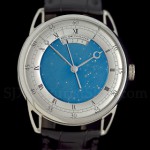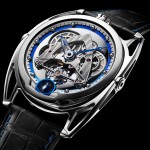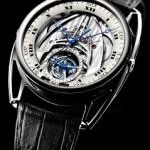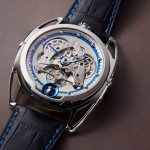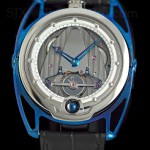De Bethune Fills Marc Newson’s Hourglass with Blued Steel
Nanoballs in heat-treated alloy.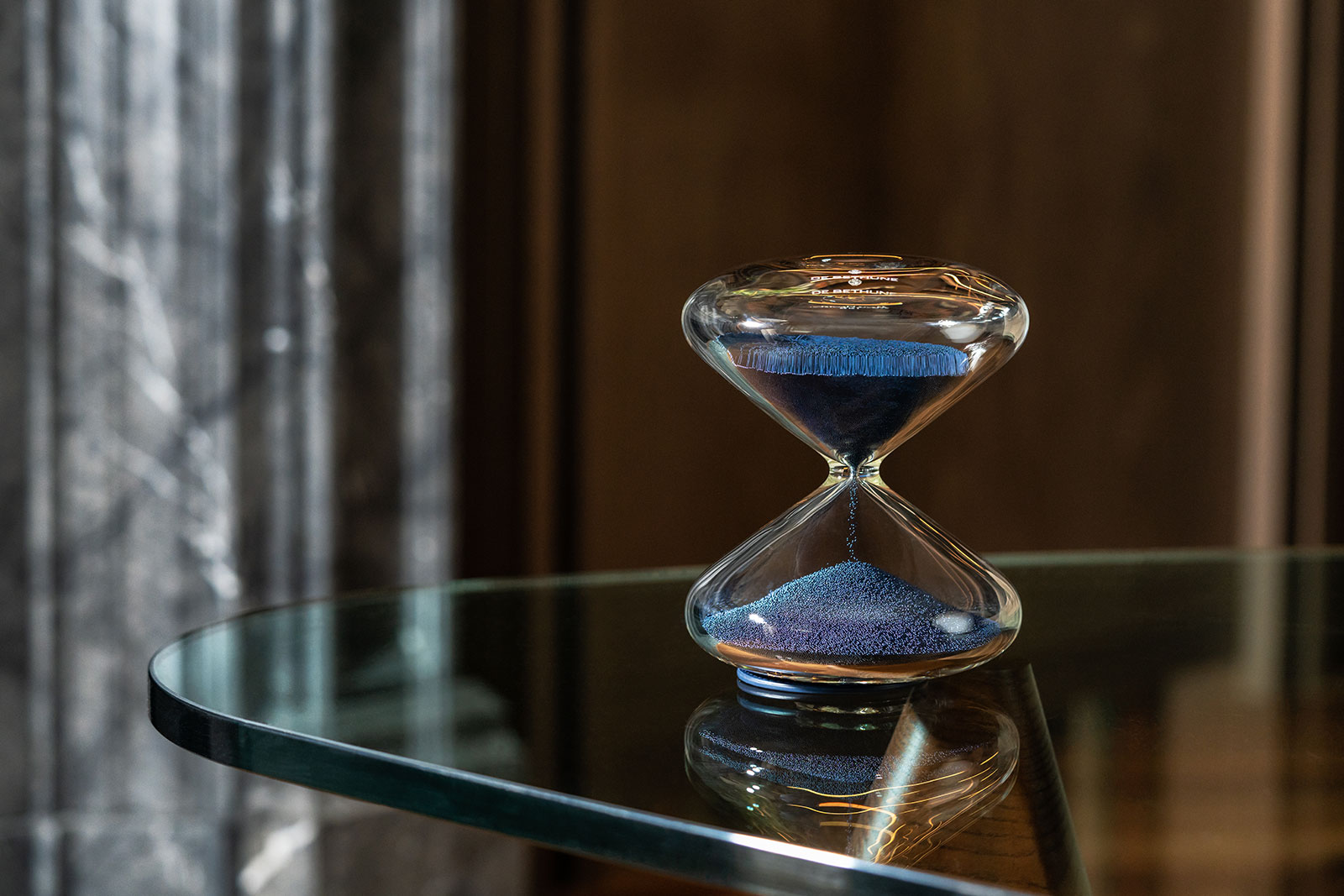
Designed a decade ago by Marc Newson, the industrial designer most famous for his Lockheed Lounge chair and the Apple Watch, the sleek hourglass is exceedingly simple yet remarkably complex to fabricate. It’s made of a single piece of glass – blown by hand in Switzerland – and filled with millions of tiny metal spheres known as nanoballs.
De Bethune has applied its signature heat treatment to the object, resulting in the De Bethune x HG Timepiece Blue Hourglass, a limited edition pair of large and small timekeepers filled with heat-blued steel nanoballs.
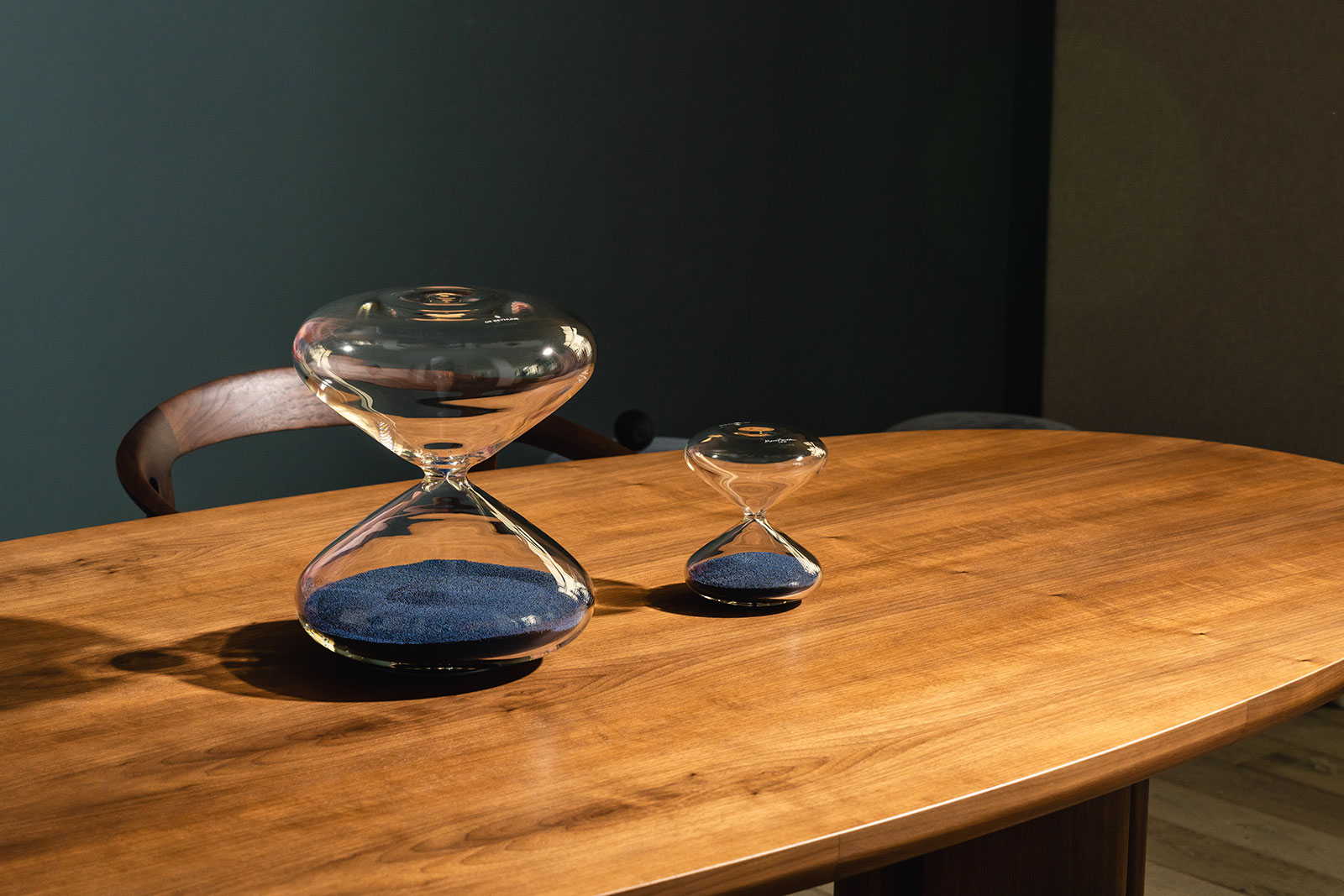
Initial thoughts
More sculpture than timekeeper, the hourglass is a beautiful object that is incredibly simple yet impressive in its artisanal nature. The glass is blown by hand yet perfectly in form and proportions.
The De Bethune touch adds another level of beauty to the object. Instead of the plated nanoballs found in the standard version of the hourglass, the Blue Hourglass contains blue nanoballs heat treated by Denis Flageollet himself.
However, the addition of Mr Flageollet’s talents to the prowess of Swiss glassblowers comes at a high price. The smaller, 10-minute Blue Hourglass costs CHF25,000, more than double the price of the standard hourglass with plated nanoballs. That’s affordable relative to everything else than De Bethune makes, but it’s a steep premium for the hourglass.
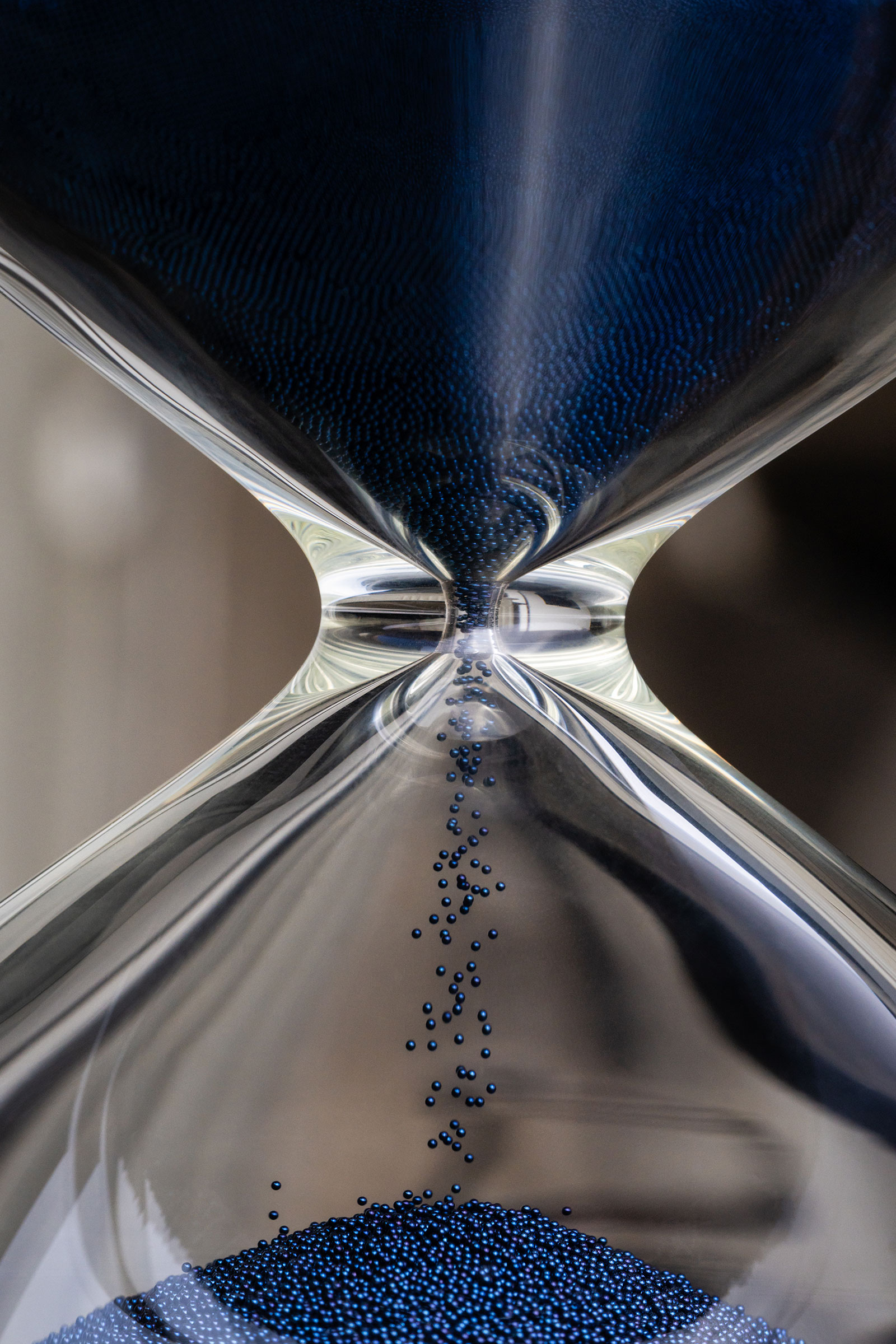
Tinkling timekeepers
The Blue Hourglass is available in the two standard sizes: the larger, 60-minute timer and a smaller 10-minute version. The former contains some eight million nanoballs, while the latter has about 1.2 million.
Essentially tiny steel spheres each just 0.6 mm in diameter, the nanoballs were originally available in several shades, including yellow gold and copper, which were achieved via plating. The heat treatment used for the latest version, on the other hand, is a first for the hourglass.
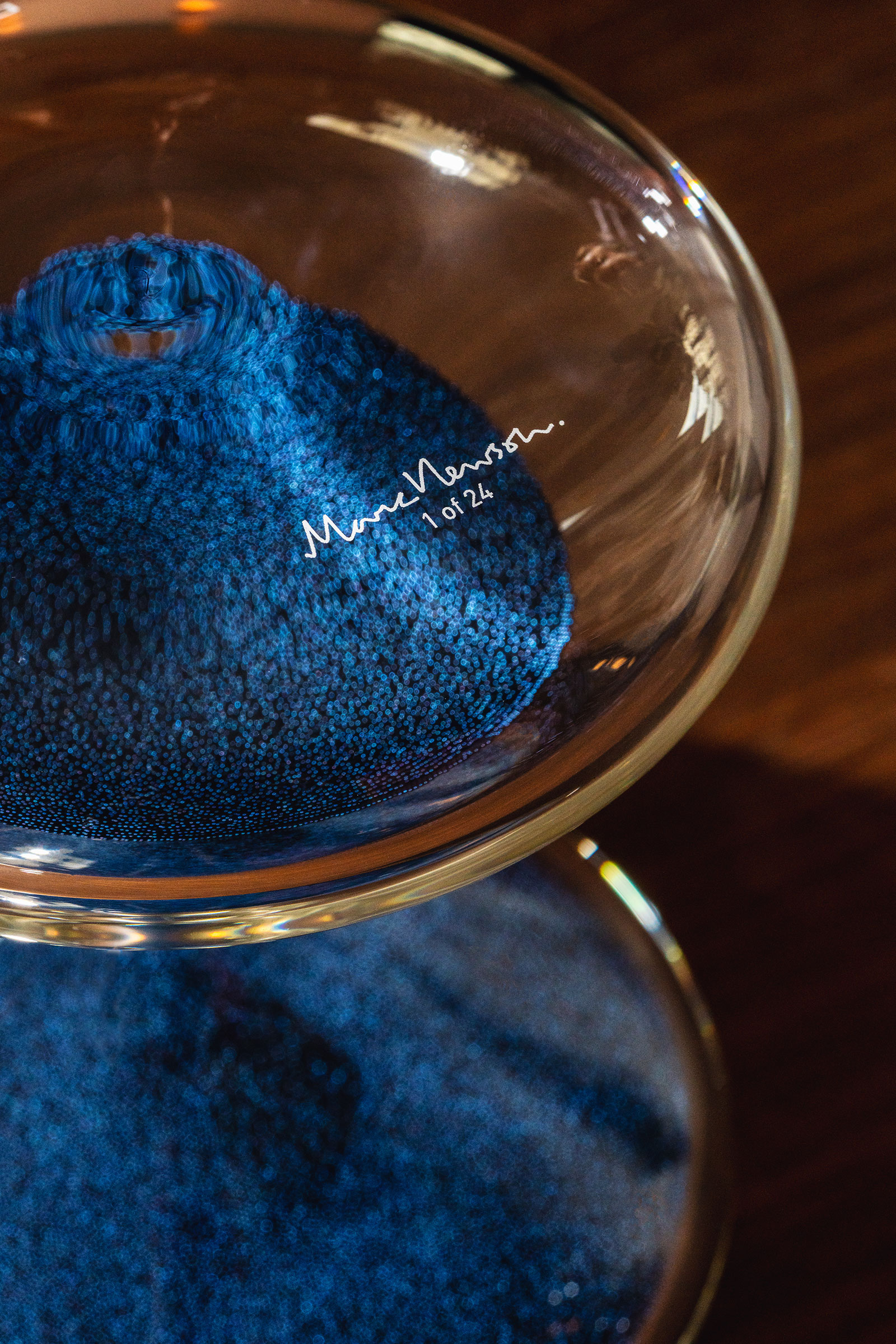
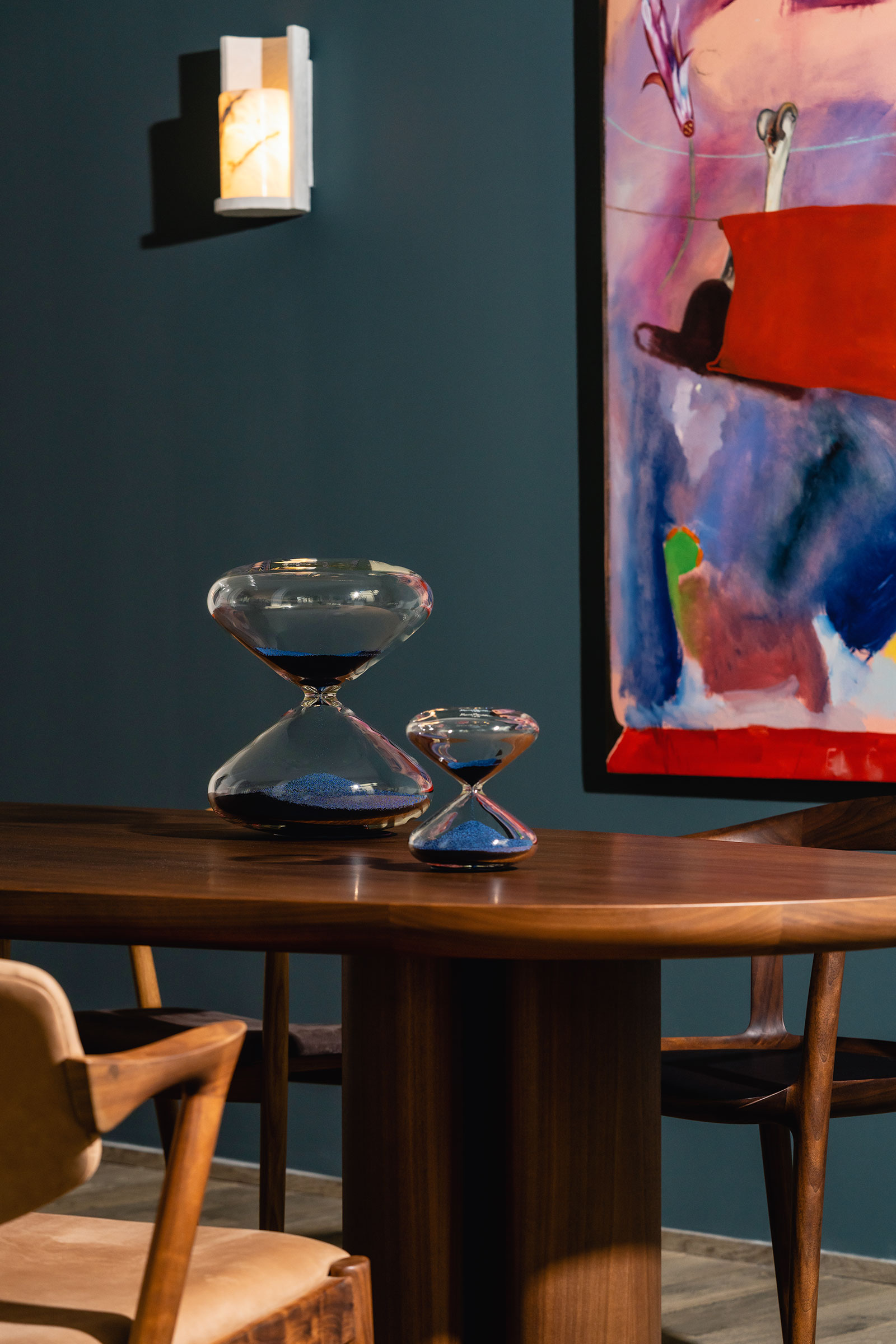
The blued nanoballs were created by Denis Flageollet, the De Bethune’s technical chief. Mr Flageollet perfected a technique for blueing the nanoballs by heating one batch at a time inside an oven while ensuring a consistent blue tone for every sphere. A total of 127 million nanoballs were blued by Mr Flageollet, a process that took several months and produced enough nanoballs for 36 hourglasses – 12 large and 24 small.
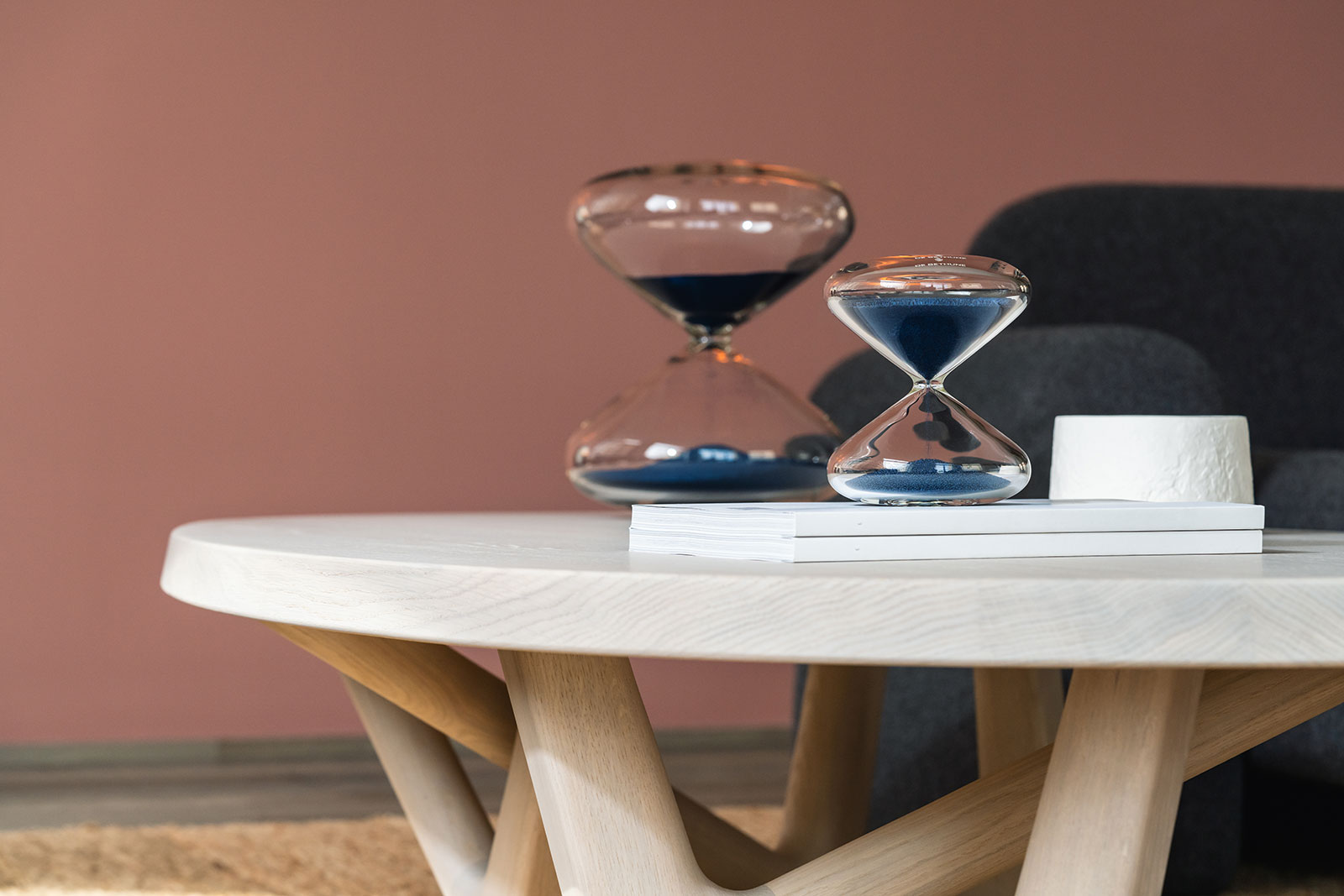
While the blued nanoballs are unique to this limited edition, the hourglass itself is identical to that of the standard version. Both the large and small versions are a single piece of glass that is blown by hand, in other words manually-operated equipment and a handheld blowtorch.
The hourglass is produced by HG Timepiece, a Swiss company that was set up to take over the rights to produce Mr Newson’s hourglass design after the original enterprise went under. Despite the change in ownership, the hourglass is made in exactly the same artisanal manner.
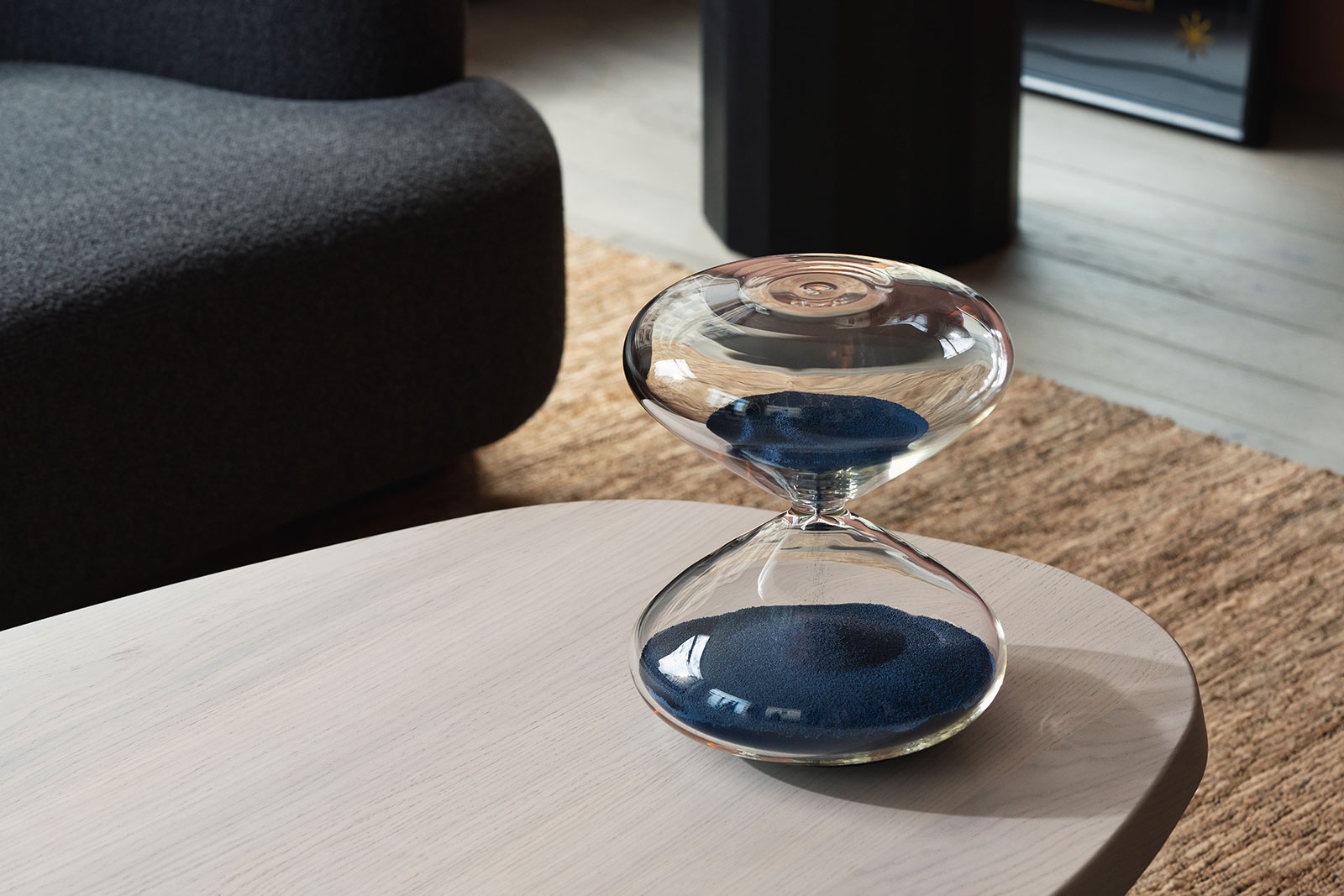
The walls of the hourglass are surprisingly thin, measuring between 5 mm to 7 mm. Despite its delicacy, the glass is no ordinary glass but instead borosilicate glass, a form of the material that is resistant to high temperatures and commonly used for laboratory equipment and cookware.
Key facts and price
De Bethune x HG Timepiece Blue Hourglass
Dimensions: 15 cm by 12.5 cm (10 minute); 30 cm by 125 cm (60 minute)
Weight: 1.1 kg (10 minute); 10 kg (60 minute)
Material: Glass containing blued steel nanoballs
Limited edition: 24 pieces (10 minute); 12 pieces (60 minute)
Availability: Made to order, direct from HG Timepiece
Price: CHF25,000 for the 10 minute; CHF60,000 for the 60 minute (prices exclude taxes)
For more, visit Hg-timepiece.com.
Back to top.

